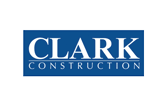Coronavirus & Construction: Even If There’s a Shutdown, We Still Have to Get Jobs Done
My Fieldwire colleagues and I have been speaking with construction professionals to figure out solutions to the ongoing COVID-19 pandemic and its repurcussions on the industry. This is my interview with Scott Kurinsky, Executive VP of BEAR construction, a Chicago-based GC, who told us about dealing with on-site COVID cases and reassuring subcontractors jobsites are safe.
[Yves Frinault] Hey, everyone. I'm Yves, the CEO of Fieldwire, and I am here today with Scott Kurinsky, the Executive Vice President of BEAR construction, a GC in the Chicago area of Illinois. And of course, I have Ray here with me, our Head of Marketing.
Scott, we're huge fans of BEAR. We love to have you as a customer, we love the work your team is doing on landmark projects such as the Old Chicago Post Office. Would love to talk more about that today, but we're going to keep the conversation more focused on what's happening right now in the news which is COVID-19 and what you're seeing.
What’re you able to do to alleviate some of the effects that it's having on the company? We had another contractor from Chicago on the show, Tim Pickett from Encompass AV. As a specialty contractor, they are already really impacted in terms of volume by COVID-19. How are you guys doing right now? Are you still able to work? What's the Situation?
[Scott Kurinsky] Right now, we haven't seen any direct jobs being cancelled or suspended. We have got a couple of clients that have put some jobs on a very temporary hold. I am told though that those are starting up again.
For the most part, knock on wood, we have been pretty fortunate. Most of our clients and contractors have continued letting us work.
As far as any direct impact on us, it's been limited. We have had some subcontractors who have chosen not to come to work and honor the stay-at-home rules that the Governor issued. That is having some impact on some of our jobs right now.
[Yves Frinault] Okay. My understanding is that construction is still essential in the State of Illinois. Regardless of type of project, you're allowed to continue work?
[Scott Kurinsky] There is some ambiguity there. I mean, if you were to really read the Governor's order — and I think most of the states have looked at Ohio and Michigan and some of the other ones — Illinois is calling construction "essential work" as far as it relates to healthcare, infrastructure, public safety, things like that. They don't explicitly say that tenant build-outs for a tenant's conference room downtown Chicago is essential business, but they're not saying it's not.
Most contractors are choosing to work. Most workers themselves want to continue to work because they need a paycheck.The ones that do want to interpret it that way or are doing so — I would say about 75% are. The remainder are choosing to honor it as what they think it is and that their work is non-essential. So you've got subcontractors like tile setters — not across the board but some individual companies on our side — that have chosen to not have their people work.
[Yves Frinault] Let's imagine that for a second that the language gets clarified and a portion of the industry has to go through a forced shutdown. Is that an eventuality you're preparing for? Do you have a contingency plan in place?
[Scott Kurinsky] We are. It's very complicated because if they do force us to shut down, we have still got deadlines and contracts that have end-dates that we have to meet. Until those contracts are amended or the government says that we don't have to honor them, we have to get those jobs done.
What I think is going to happen — just watching things develop day-by-day, we are having more and more buildings where there is a confirmed case at one property that might be a 50-story office building and they have to evacuate two floors. All those workers have to go home and stay home until the place is cleaned and sanitized. So far, that's all been a one-off case. We have got one confirmed case. Then everyone cleans, they go back to work two days later. But what happens when it's another worker three days after that? Then two days after that there are four workers on a site?
I think eventually if the numbers keep playing out like we think they are going to, you're going to get to a point where it's almost impossible to keep up with the job cleanings and the job shutdowns. I think at some point as contractors, collectively we're going to have to make the decision to suspend work if it gets to that. We are all hoping it doesn't.
As things continue to come up one at a time, we will continue to deal with them, but I just get the feeling that, like you're seeing in New York right now, we're going to get overwhelmed eventually. You won't be able to keep up with the clean-up and the contingency plans.
[Yves Frinault] Are you hearing from New York contractors that they are halting work right now on most jobs?
[Scott Kurinsky] I haven't directly. I have got some clients in New York and they have told us that it's very similar to Chicago thus far, where we have something come up in one building, as a one time thing, and then they clean and then go back to work. Thus far, that's what they're seeing there, that's what we're seeing here. But watching the news, the cases there are really starting to skyrocket and I think as they become more widespread we're going to have issues across the board.
[Yves Frinault] You mentioned sanitizing sites and maybe communicating specific protocols to specialty contractors. What are you effectively doing to limit the spread and making sure your sites are as safe as possible?
[Scott Kurinsky] First and foremost we have put up signage on every jobsite, indicating the spread of the disease, how to avoid it, the symptoms to look for.
We have added hand sanitizing stations to every possible location on every job we have. We’re implementing the hand washing stations everywhere.
We are limiting break times, telling guys they can't take breaks clustered in big groups/ They have to stay separated like the rules are asking for.
We're staggering shifts.
Going into elevators, instead of twenty people going up to a jobsite at 6 AM, we are asking them to only go up in groups of two or three at a time and they're just taking turns going up the elevator and not getting ten into the elevator at one time.
Those are the biggest steps with subcontractors on our jobsites. A lot of it is just awareness, spreading the word to our people and our contractors.
[Yves Frinault] Understood. We have heard stories of GCs rotating lunch breaks between trades so that they get their own tables and things like that. That makes sense.
From a pure productivity perspective, what level of productivity are you able to continue work at right now? Are we talking 50%? are we talking 80%?
[Scott Kurinsky] I would say closer to 80%. I actually spoke to a couple of my superintendents this morning and we are definitely seeing some labor — not shortages, I don't want to say it like that but — labor deficiencies, where if a crew had ten people that should be on a job, they might have eight that actually show up to work. The other two choose to stay home, so we're definitely getting some shortages of manpower in those regards, but nothing that's really affected any jobs from moving ahead yet.
I would say we're at about 80-to-90% efficiency right now.
[Yves Frinault] All right. If you had to look at the attendance of specialty contractors, like the ones that are showing up versus the ones that are trying to be safe, and not send some of their craftsmen on site, what's the proportion right now?
[Scott Kurinsky] I would say it's about the same. It's probably 80-to-90%. We have only had a very few. And most of those that we have, I'll say, walked off the job or decided not to come to a job, have been in a response to an event.
For instance, we were in a build last Saturday, actually at the Old Post Office. We had a confirmed case. The building and everyone there took all the right steps and got everything cleaned and sanitized, but the rumor mill started circulating. There's 800 workers in that building between us and the other GCs that are working the site.
It doesn't take long for rumors to get blown out of proportion. Pretty soon, the whole building is locked down and people don't know what they're doing. None of which was the case.
Monday there's a lot of uncertainty with the trades and we had a very low attendance. Once we were able to get in front of the situation and the building, and we all put out our memos to everyone stating that we're taking the right steps, the whole building has been cleaned, we have identified the infected person, then Tuesday rolled around and we were back up to what I would say are pretty normal attendance again.
Monday everybody was scared, didn't know what was going on. Once we have informed them what actually is going on, then we are able to say it is safe to go back to work. They're coming back.
[Ray Mina] Yes and, Scott, that's a good segue into a question, speaking of subcontractors. A big question that keeps coming up, and it's a conversation we have had multiple times, including in the town hall, is that since things are changing so quickly, there are things changing by the hour sometimes in certain cities. What recommendations would you have to other general contractors around the country of how they can better communicate with their subcontractors about those changes and about your recommendations?
[Scott Kurinsky] We use a software called Pipeline that we communicate all our bid platforms through with our subcontractors. Every one of our subcontractors and specialty contractors is in our Pipeline system.
We issued a statement, actually on Monday as a response to this case I just mentioned, through that platform that goes out to all thousand of our vendors. Everyone gets it, and we get a confirmed receipt if they read it or if it's in their mailbox unopened. Then they can respond to that through Pipeline or directly to us.
That's how we have chosen to do it because it hits everybody at one time. In specific buildings where there are exposures— We just had a new one at another building. In that case we are just going to those eight or twelve subs that are on that job and just communicating via email or phone depending on what the case may be.
[Ray Mina] What kind of information do you think— That is one of the things we're hearing, because this is unprecedented, a lot of GCs haven't really thought about how to respond in a situation like this. What things would you say, for instance, that really help to come up with a plan to ensure that you're communicating? What are those top three things that need to be communicated regularly to their subcontractors?
[Scott Kurinsky] I think first, they want to know that you're actively monitoring the situation. We want to keep communicating to them that we as BEAR Construction, the owners and leaders of this company, are actively talking every day and listening to news outlets, talking to industry peers, clients, trade organizations, and the unions about what their stances are and everything.
So:
- That we're on top of everything and it's under control.
- They want to know what procedures we're taking to make our jobsite as safe as possible and that goes back to the hand washing stations and the signage and toolbox talks every day with our crews, every day or every other day to discuss the situation. They want to know what we're doing to protect them.
- They also want to know what to do, themselves. We're trying to give them guidance based on the CDC guidelines and what their best experts are telling us to do and pass that on to them.
- Then the fourth thing is probably what are our protocols in the event of an exposure or confirmed case.
We have got all four of those things that we're trying to communicate with them as often as possible.
[Ray Mina] What are "toolbox talks?” That sounds like a BEAR-branded thing.
[Scott Kurinsky] I wish it was. No, it is kind of an industry-wide thing.
Typically they’re regarding safety and jobsite means and methods. Usually, once a week our superintendents and our safety officer go out to the job, gather all the trade workers on that jobsite and they talk about a topic. They rotate topics through the crews throughout the year.
The last three weeks, however, it's all been COVID-19.
[Yves Frinault] I think there are really two big questions if I am a specialty contractor working right now on a jobsite. How do I keep my craftsmen and women and technicians safe? And I think we talked about that extensively so far in this discussion.
There is the other side which is, how do I keep the company healthy while my volume might be affected? Right? What are you seeing? Are you having different conversations with your subs? Maybe sometimes with your owner, maybe? To make sure that we keep the cash flow going well so that in, I don't know, four-to-six weeks when this thing starts to ease up we don't have half the specialty subs on the jobsite going bankrupt, right?
[Scott Kurinsky] That's a very important point and one of the very first things we started considering beyond the safety of ourselves and our crews was our cash flow and keeping the company in a good position through this. That translates to our subcontractors. Very early on, three weeks ago when this was all kind of really hitting the fan, our ownership really made a conscious effort to get in contact with all of our clients, especially any of those with any past-due receivables, and to start pushing those receivables.
We are also making a huge push on our end with our people to get our billings in as promptly as possible. This way, if there's any kind of slowdown in payment, it's not as bad as it could be if we had waited.
Likewise with the subs, we are really making sure that they are not overbilling us or forward-billing us, because there is a little bit of a panic out there and people are starting to watch their cash flow. We have already seen some subs — it's their first week on the job and they're billing us 80% for the job.
We are really trying to watch what they are billing us, we're trying to protect them by staying in contact with our owners and billing promptly, and to chase the old receivables that we still have out there.
[Yves Frinault] That makes a lot of sense. I didn't actually think about the problem of potentially overbilling to prepare for a very extended cash flow period which would be very toxic down the line for the project. That makes a lot of sense. In general, my perception, though, is that a two-to four-week cash interruption for specialty contractors is a lot harder to endure than for GCs. What are the horizons? Where do you think that cash flow really becomes a problem for you?
[Scott Kurinsky] Yes. I think it's going to depend on every business individually but I think in general the bigger the firm, the better you can ride out these types of events. A lot of restaurants and other small businesses are going to hurt really bad. Some of the small contractors are going to be in that same position. I talked with a couple communications vendors who — all their work is downtown, similar to the person that was on the town hall yesterday with you guys. A lot of their work is just cancelled because the bars aren't operating, the conference rooms aren't operating, there's just nowhere to put their product. Those people are going to feel it more than us as a GC. We are all going to feel it but the smaller the company, the worse it's going to be.
[Ray Mina] Scott, it's pretty impressive. You seem to have a really good plan in place and you have mentioned from a safety perspective that you're relying on the CDC for information. What are the other sources of information that you've been counting on, to make sure you stay on top of this as much as you can?
[Scott Kurinsky] We all watch the daily briefings with our Governor and our President. Every day I watch the news, just about 24 hours per day.
We're talking a lot to our industry peers, our competitors. It's amazing, a lot of our competitors have come together at this time and are talking about how to protect ourselves as a whole and not just as an individual company. So we are talking with them, we are watching what clients are doing, and reacting to their announcements and their procedures. It's really a work-in-progress. We have amended our policy about four times already now in the last week and half based on new information from all those sources.
[Ray Mina] Wow.
[Yves Frinault] Great. Well, Scott, thanks for the great and extremely focused information. I think what I am remembering is: communicate well; talk to the other companies in your sector; adapt to the situation frequently. It seems that you have amended your policies quite a lot. And just to stick together for the next few weeks until this is over.
[Scott Kurinsky] That pretty well sums it up.
[Yves Frinault] Very good. Thank you very much, Scott.
[Scott Kurinsky] Thank you, gentlemen.

 Yves Frinault •
Yves Frinault • 














